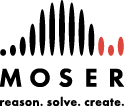ISEE®
What You Need to Know
What
The ISEE (Independent School Entrance Exam) is a widely accepted entrance exam for independent schools, and is the most commonly taken test for admission to Colorado independent schools. There are four levels to the ISEE: Primary (entering Grades 2–4), Lower (entering Grades 5–6), Middle (entering Grades 7–8), and Upper (entering Grades 9–12).
When
Students can register to take the ISEE up to three times in a 12-month period, one time in any or all of three testing seasons: Fall (August–November), Winter (December–January), and Spring/Summer (April–July).
How
Many independent schools administer the ISEE on their campuses on one or several dates during the school year. Many of these ISEE administrations are open to all students wishing to take the test (these are called Open Test Sites). These open test administrations are listed on the ISEE’s website.
Other schools limit their ISEE administrations to only those students applying to, or currently enrolled in, their schools. These test dates can be found on individual schools’ websites.
Appointments can be made to take the ISEE at an ISEE Testing Office or at a Prometric office (note that tests taken at a Prometric office are only offered in an online format).
Lower Level Test Format
Section
Questions
Time Limit
Verbal Reasoning
Quantitative Reasoning
Reading Comprehension
Mathematics Achievement
Essay
34
38
25
30
1 prompt
20 minutes
35 minutes
25 minutes
30 minutes
30 minutes
Total: 2 hours, 20 minutes
Middle and Upper Level Test Format
Section
Questions
Time Limit
Verbal Reasoning
Quantitative Reasoning
Reading Comprehension
Mathematics Achievement
Essay
40
37
36
47
1 prompt
20 minutes
35 minutes
35 minutes
40 minutes
30 minutes
Total: 2 hours, 40 minutes
Description of Test Sections (Middle and Upper Level)
- Verbal Reasoning
- Comprised of two different types of questions: synonyms (20 questions) and sentence completions (20 questions).
- Synonym questions measure a student’s vocabulary and word recognition abilities. Four answer choices are provided and students choose the word closest in meaning to the word in the question.
- Sentence completion questions test a student’s ability to understand words in context and their function. Sentences will have one or two blanks and students are tasked with using clues in the sentence to logically complete each sentence.
- Comprised of two different types of questions: synonyms (20 questions) and sentence completions (20 questions).
- Quantitative Reasoning
- This section is intended to measure how a student thinks mathematically, rather than how much math a student has learned. Relatively little calculation is required, as the section focuses more on measuring a student’s problem solving skills.
- Question focus on comparing and contrasting quantities, analyzing and interpreting data, calculating probability, applying measurements, and using logic to arrive at solutions.
- Comprised of two parts: words problems (20 questions) and quantitative comparisons (17 questions)
- Quantitative comparison questions are unique in that they provides quantities in two columns (A and B) and then provide students with 4 answer choices:
- A) The quantity in A is greater
- B) The quantity in B is greater
- C) The two quantities are equal
- D) The relationship cannot be determined from the information given
- Quantitative comparison questions are unique in that they provides quantities in two columns (A and B) and then provide students with 4 answer choices:
- No calculator use is allowed
- This section is intended to measure how a student thinks mathematically, rather than how much math a student has learned. Relatively little calculation is required, as the section focuses more on measuring a student’s problem solving skills.
- Reading Comprehension
- Comprised of six reading passages, each with six questions.
- Passage topics drawn from history, science, literature, and modern events.
- Six main types of question:
- Main idea
- Identifying supporting ideas
- Making inferences and predictions
- Vocabulary
- Organization and identifying major themes
- Tone and style
- Mathematics Achievement
- Measures the math skills students have learned in school:
- Number theory and operations
- Algebra
- Geometry
- Measurement
- Probability and data
- Problem solving
- No calculator use permitted
- Answer choices may contain “trap answers” arrived at by common mathematical mistakes
- Measures the math skills students have learned in school:
- Essay
- Students write an essay in response to an prompt.
- A copy of the essay is sent to schools a student applies to, but the essay does not receive a score.
- Example: “Of the people you have met in the last year, who made the most important impression on you and why?”
Scoring & Accommodations
Scoring
ISEE scale scores for each test section range from 760–940. The essay is unscored. The scale score is based on the number of questions a student answered correctly and accounts for the slight variations among test forms. The scale scores are accompanied by a percentile rank showing how a student fared compared to other students from a given grade who have taken the test in the past 3 years.
Testing Accommodations
Testing accommodations, including extra time, may be available for students with learning differences. Students seeking testing accommodations for the ISEE must request accommodations first and complete the formal review/approval process before registering for the test (see Accommodations on iseetest.org). Parents should contact iseeaccomodations@erblearn.org with any questions.
We're Here to Help!
We have helped thousands of students worldwide reach their testing and academic goals. Our senior tutors have over 10,000 hours of one-on-one teaching experience, and as a result of our customized programs, Moser alums have gone on to attend top schools.
See why the Moser name is trusted by families and schools alike. Call today for a free consultation!
Fill out a form and receive an in-depth consultation free of charge.
Call our Founder and President, Scott Moser, to discuss your student’s goals and needs.
